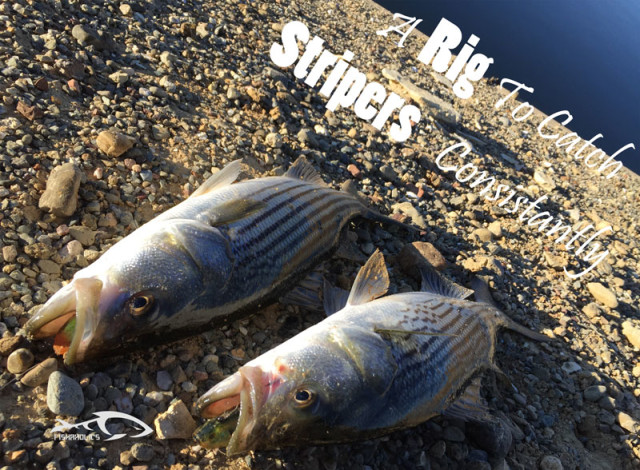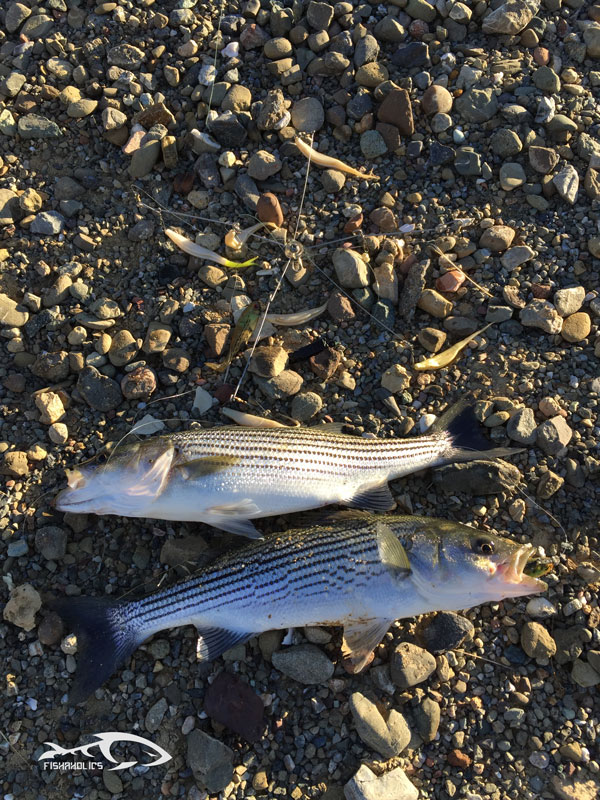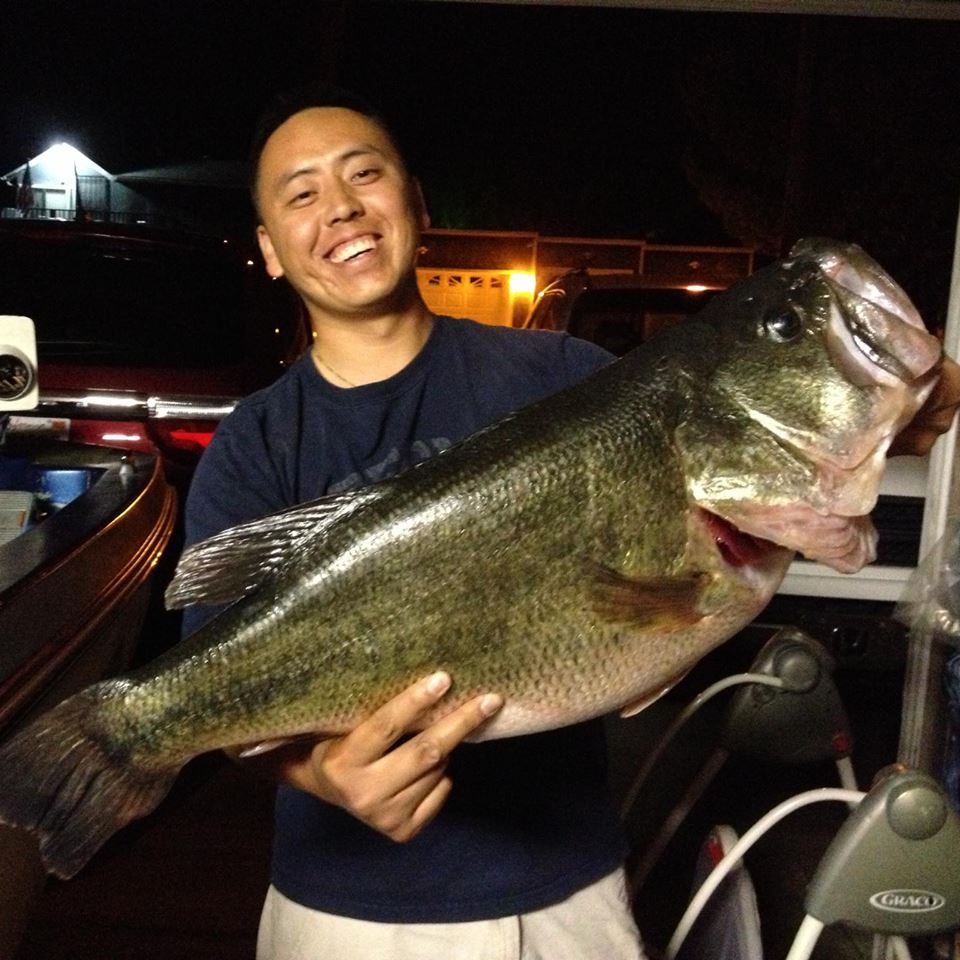
A Rig To Catch Stripers Consistantly
In this post, I want to introduce something that I haven’t seen anyone attempt before at the California Aqueduct. It’s one of the most difficult techniques I’ve ever tried to pull off. I know only a few individuals will give it a try. These are your innovators and risk takers. People who aren’t afraid of trying new things and like the challenge.
I’ll be showing you how effective trolling with an Umbrella rig is at the California Aqueduct.
The purpose of this post is to prove a concept. The concept being trolling an Umbrella Rig at the California Aqueduct. A more detailed step by step and how-to post can be made available if you are interested. So, let me know in the comments below.
So What’s An Umbrella Rig?
Umbrella Rigs have been in use for the longest time by striper fishermen. It’s a technique that uses a rig that resembles a school of fish when pulled behind a boat. Checkout the Atlas Umbrella Rig that can collapse when you need to store it. In fact, the Alabama Rig was inspired by the Umbrella Rig as bass fishermen realized its potential for catching bass.
Unlike an Alabama Rig, you can’t cast an Umbrella Rig. It has to be towed behind a boat. In the case of the California Aqueduct, I’ll be trolling this rig using a beefed up custom planar board.
The U-Rig consists of three arms or more arms decorated with several decoys on each arm. It’s bigger than an Alabama Rig and attached at the end of each arm is a leader line. You can tie any type of swimbait on the end of each leader line.
Striped bass evolved to travel over long distances. One research found they can travel up to 13 miles a day. Like most ocean going predatory fish, they’ll hunt in schools and chase smaller baitfish for food. Schools of shad, silverside minnows and even smaller stripers are typical food sources they’ll target at the California Aqueduct.
In the fall when cover for bait fish begins to disappear, the water begins to clear up and drop in temperature, stripers will begin gorging on the abundant baitfish that live in the water system.
This is typically the time when you’ll hear reports of striper boils.
When To use An Umbrella Rig
Sometimes you’ll encounter an entire stretch of water with boiling stripers. Boil after boil you’ll see them hammer fleeing baitfish on the surface and along the shore line. You’ll cast out your lure and…nothing. You use top water lures, jerkbaits, swimbaits and every type of lure you can tie from your tackle box with no success. It’s like bringing pizza to a lobster party. What would you rather eat?
Stripers are the pickiest feeders sometimes. The fall pattern is a great time to use the U-Rig because it will imitate the food source. You’ll keep the rig in the strike zone. The lures are alway in the water and you’re covering more water while searching for fish.
Another great time to troll the Umbrella Rig is when the striper bite shuts off. When surface activity ceases and you’re no longer getting any bites. I find that when this happens, most stripers suspend over deeper channels. They’re no longer actively searching for or actively feeding on bait fish. Trolling a U-Rig through a school of these striped bass is a sure way of getting their attention.
I noticed on a recent trip while fishing a section of the Aqueduct. In the early morning hours, the stripers were heavily feeding on the surface and chasing baitfish all along the canal wall. Then as if on cue, they completely shutoff. Everything I tried that morning no longer worked. So I trolled the U-Rig and through the same section of water. Lo and behold, I started hooking into them again. There’s something about imitating a school of baitfish that get these stripers going.
This technique definately works at the California Aqueduct. It’s an advance technique that takes practice. Here are some pros and cons about using it.
Pros/Cons
I’m still trying to streamline this technique. Here are some drawbacks to using this method.
First, the planar board pulls out very well. Too well. You’ll need strong line to be able to pull the planar board. That’s a design issue that can be resolved by building a smaller one. The process of setting it up is quite tedious sometimes. Trying to keep the swimbaits from scraping and picking up vegetation along the canal wall is key. You want a clean presentation so these stripers will bite.
This is probably a technique that will help you catch more fish consistently. You can even switch it up with some bigger swimbaits for bigger fish as well. It allows you to cover more water more quickly. Your lures are always in the water. You can target fish at any depth or distance from your position. Plus, it imitates a school of baitfish that stripers just can’t resist.
If this post has inspired you in any way or sparked some interest in using a U-Rig at the California Aqueduct or any where, let me know in the comments if you’d like a more detailed step by step tutorial on how to do this. This is quite new to me as well and I’m learning on the go. Any tips about how to improve or stream line the process would be much appreciated. Try this technique with the new patent pending Atlas Rig, a collapsible umbrella rig.



Hi Meng , great video on the Urig. Is there a step by step tutorial on how to do this? thanks
Once the flow slows down I can make a new video explaining it in detail. Stay tuned.
Can you tell me what rod, reel, and pound test for the Urig?
There are two rods in this video. To use the heavier planarboard, you’ll need a heavy rod that can handle the pull from the board. The rod that’s pulling the rig, you can use a standard rod.